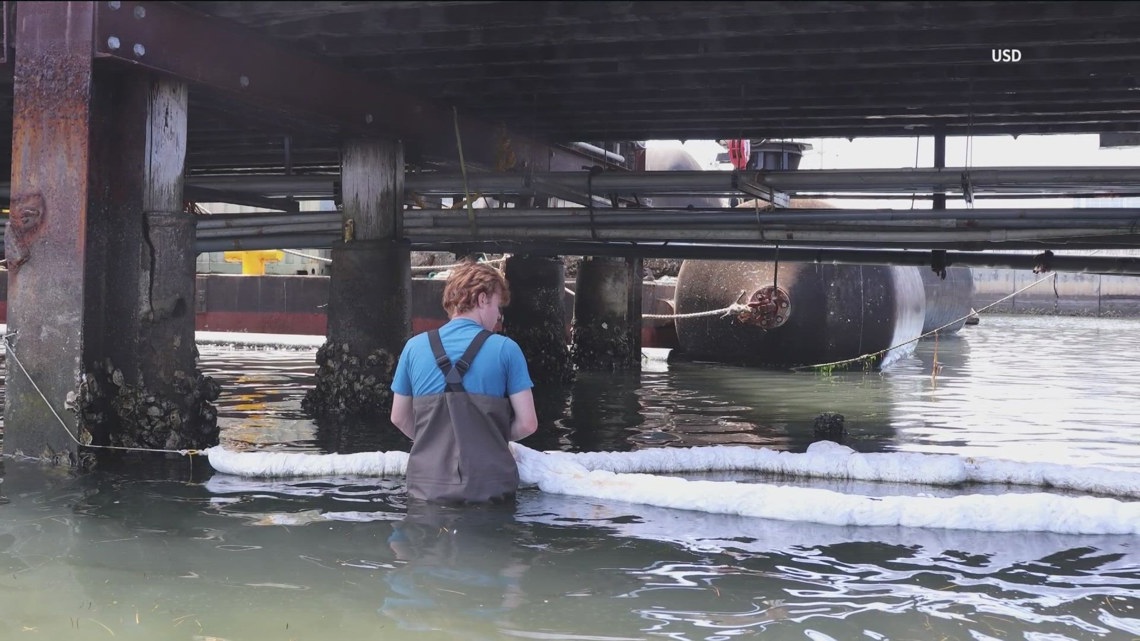University of San Diego students found heavy metal levels 30 times above normal in local waters using recycled booms that could revolutionize port cleanups.
SAN DIEGO — What appears to be pristine water in San Diego Bay is hiding a disturbing secret beneath the surface.
University of San Diego graduate students working with a local company have discovered alarming levels of heavy metals, microplastics and invasive species in Mission Bay and San Diego Bay using innovative cleanup booms made from recycled materials.
The partnership, called 24/7 Blue, pairs USD students with San Diego-based Earthwise Sorbents to test sustainable cleanup technology that could serve as a model for ports and marinas nationwide.
“It’s unbelievable the amount of material that we are picking up,” said Dr. Michel Boudrias, who chairs USD’s sustainability task force. “We’re picking up 30 times the amount of heavy metals that are typically out there.”
The 5-pound, 10-foot booms are placed in local waters for two to three months before being replaced. When flipped over, the seemingly clean-looking devices reveal the extent of contamination lurking in San Diego’s waterways.
The booms are manufactured from recycled and repurposed materials, including polyurethane surfboard foam and polypropylene fabrics, giving waste products a second life as environmental cleanup tools.
“It’s full of heavy metals, different types of chemicals, like hydrocarbons,” Gunner Kolon, a USD environmental marine science graduate student said, examining bags of used boom strips that had been submerged for three to four months. The contamination includes copper, zinc, arsenic, invasive species and microplastics.
Boudrias is leading the research and says the approach is proactive rather than reactive. The research provides critical long-term measurements for analyzing the ocean’s ecosystem. Boudrias has collected 15 years of data in Mission Bay.
“We’re really particularly focusing on cleaning up the oil, the metals, and then determining what’s happening in the ecology of the bay,” Boudrias said.
Once contaminants are pulled from the booms, they undergo evaluation to determine disposal methods. Materials deemed hazardous waste are handled according to environmental regulations, while safer materials can be sent to landfills. USD is also exploring extracting biofuel from collected contaminants.
Boudrias said expansion plans include South Bay areas plagued by Tijuana sewage pollution.
“Could we bring in our project and start putting our booms into some of the areas that are maybe the most effective, like Imperial Beach, for example?” he said.
The partnership with the Port of San Diego creates hands-on learning opportunities for students while addressing environmental challenges.
“One of the great things with the class we have is not only are students learning how to do science, we’re preparing the next generation of scientists,” Boudrias said.
For Kolon, the work provides personal satisfaction beyond academic achievement.
“It feels great to clean up any part of the ocean,” he said.
The 24/7 Blue partnership demonstrates how universities and private companies can collaborate on environmental solutions while providing workforce development opportunities in the growing field of ocean cleanup technology.
